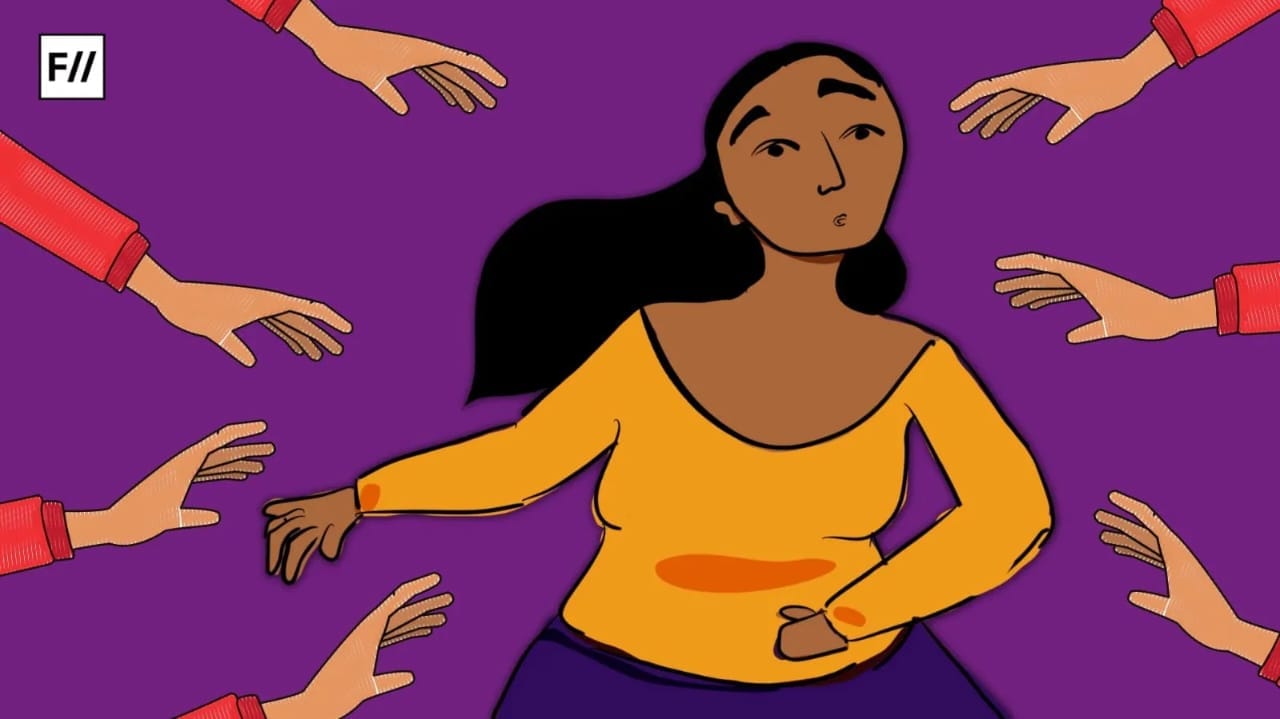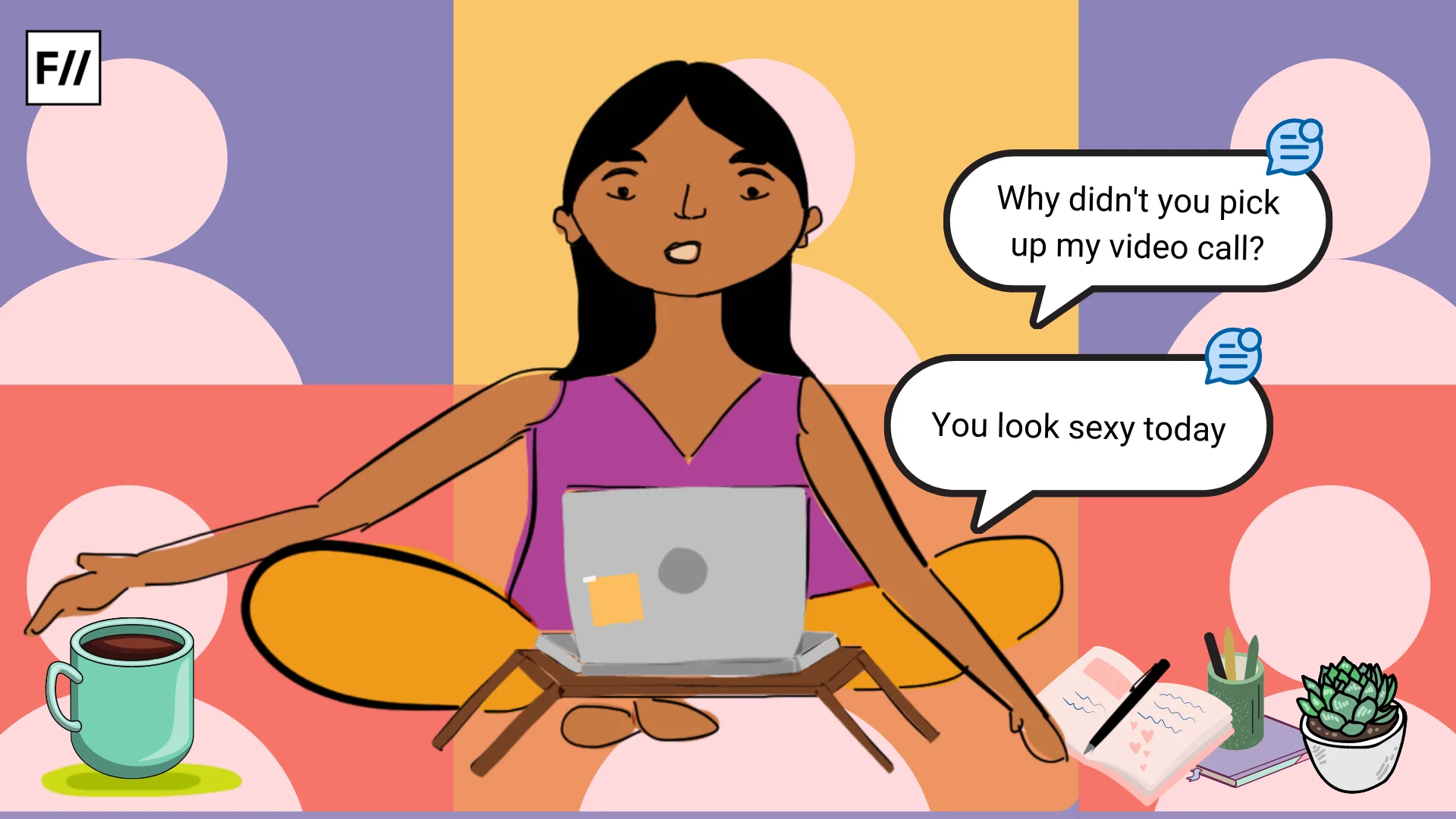Editor’s Note: This article is published as a part of the #DigitalHifazat campaign combatting online violence against women and non-binary people. Feminism in India and The High Commission Of Canada are focussing on this issue of online violence against women as a part of the 16 Days of Activism to end gender-based violence against women and girls. If you have a story to contribute, email asmita@feminisminindia.com.
Throughout history, as well as in contemporary times, we have seen society punish and limit vocal women. Remember Qandeel Baloch? In today’s day and age, this punishment routinely comes in the form of online abuse and trolling. Women in India and across the world face gendered abuse, rape threats and image-based sexual abuse for speaking their minds on the internet, and nobody faces the brunt of online violence more than women journalists.
In 2016, Feminism in India conducted a survey of 500 women and non-binary people about their experiences of online violence. We found that the topics that garnered the most abuse, mostly from men, were those on feminism, politics and religion. Survivors of this online abuse often reported to shutting down their accounts, or reducing their online expression about these topics – a sad consequence that doubly victimises them.
Also read: Women Journalists Are Everything People Don’t Want Them To Be
For women journalists however, speaking out about politics (which is inextricably tied to religion in India), is a part of their job – not one that they can shut off at will. For doing their job, they are showered with vile threats and online harassment continuously. “When you try to correct some of the disinformation on Twitter, that’s when a lot of the trolls come after you,” said Dhanya Rajendran, the editor in chief of NewsMinute, in an interview with CPJ. “You know the backlash that’s going to come, and you think, is it even worth it? I now rarely voice my opinion on news,” she said. Rajendran was viciously trolled in 2017 by an actor’s fanbase for making a casual comment about a movie that he starred in.
A global study conducted by the International Federation of Journalists that surveyed 500 women journalists in 50 countries found that 44% of them had experienced online abuse. More broadly, a study by the International Women’s Media Foundation and International News Safety Institute found that nearly two-thirds of women journalists had experienced some form of intimidation, threats or abuse in relation to their work. Online violence, physical violence in the field and sexual harassment at the workplace all combine to make journalism an unsafe work environment for women. One can hardly forget the case of Gauri Lankesh, a journalist known for speaking out boldly against the establishment, who was assassinated in her house in Bengaluru a little over two years ago, after receiving death threats online.
We have systematically disenfranchised our media from speaking its truth, and women in media even more so.
The online abuse that women journalists face is most visible on Twitter. In a study of US & UK journalists, a project called Troll Patrol by Amnesty International and Element AI found that 7% of Twitter mentions of female journalists were problematic or abusive, amounting to one in every 14 mentions. It is an easy assumption, given the current culture of vitriol and abuse on Indian Twitter, that this number be much higher for Indian women journalists. Neha Dixit, an independent investigative journalist said that she receives upward of 300 abusive messages every day. Another journalist and academic, Maya Mirchandani told CPJ that she has blocked over 10,000 Twitter accounts to avoid viewing online abuse and threats about her.
However, this online abuse can also take other forms, outside of trolling, threats and intimidation on Twitter. Rana Ayyub, a prominent Muslim woman journalist, faced image-base sexual abuse when a photograph of her face was superimposed onto a porn video and spread over WhatsApp and social media. Journalists also face doxxing – where their personal information and contact details are leaked to the public. Barkha Dutt, one of the most high-profile and highly targeted women journalists in India, had her phone number leaked online, resulting in thousands of abuse and death threats on her personal phone number, including unsolicited dick pics, in a organised hate campaign.
Also read: #MeToo Hits Indian Media – Women Journalists Are Sharing Their Stories of Workplace Harassment
In an interview with Global Editors’ Network, Rana Ayyub said, “I have been one of the most trolled women on Indian social media. In 2010, I got the first serving Home minister of a state arrested. The man is now the President of the ruling party and the Home Minister of India. My life was made a living hell. I was subjected to a concerted hate campaign. The right-wing trolls generated fake tweets in my name, suggesting that I hate India and I support Islamic terrorism. I was doxxed. My number and address were leaked on social media, on Facebook, Twitter and Instagram. A porn video with my image morphed on it was circulated all over the country. On a daily basis I get rape threats, death threats, I get calls in the middle of the night threatening to kill me. The barrage of hate that I get online has now also started affecting my line offline.“
Online violence against women journalists ought to be considered a threat to press freedom and subsequently, democracy itself. Just as with India’s track record of online violence against women journalists, our press freedom index too ranks at a dismal 140 out of 180 countries. We have systematically disenfranchised our media from speaking its truth, and women in media even more so.
the onus cannot and should not lie on women journalists’ fortitude – it must lie on all of us to create a work environment that is less hostile to them.
What are the implications of the online violence that women journalists face? The obvious consequence is the mental trauma that women journalists face daily. Rana Ayyub told CPJ that she sought medical treatment for anxiety after facing the incident of image-based sexual abuse. Online violence can have severe psychological implications for its survivors, especially women journalists, due to its non-stop and never-ending nature. CPJ has come up with a guide for journalists to maintain their mental health in the face of online abuse.
Beyond the mental toll that it takes, the continuous onslaught of online violence serves to disincentivise women from taking up this profession (which is exactly what the trolls want as well), leading to fewer women journalists at a time when we desperately need to break the glass ceiling in the media industry. Jesper Højberg, Executive Director of International Media Support (IMS) echoes this sentiment when she says,“Not only are women targeted for their journalism, but also for their gender. Fewer women journalists reporting freely translates into fewer women and women’s issues and voices represented in media. This has massive implications for the diversity of perspectives presented to the public, as well as inequality of representation in the public sphere. It is time for all media houses, big or small, to develop gender-specific guidelines that ensure equal working conditions and anti-harassment policies.”
the continuous onslaught of online violence disincentivises women from taking up journalism, leading to fewer women journalists at a time when we must break the glass ceiling in the media industry.
Women journalists in India though, keep going, even in the face of this adversity. As Madhu Trehan of Newslaundry says, “We certainly cannot think that we have to play it safe because the Twitter trolls will go after us. We do a story which we consider worth doing regardless of how people react.” This spirit is commendable, but we must remember that the onus cannot and should not lie on women journalists’ fortitude – it must lie on all of us to create a work environment that is less hostile to them.
About the author(s)
Asmita is a Freelance Communications Consultant, and specialises in leading digital advocacy campaigns for social and gender justice issues. When not using social media for work, she uses social media for fun (and a healthy dash of existential despair).



